Cop28 keeps 1.5°C goal within reach
20 December 2023

The 28th Conference of the Parties of the UN Framework Convention on Climate Change (Cop28), helmed by the UAE’s Sultan al-Jaber, stopped short of recommending the phasing down of fossil fuels, which was on the wish list of half of the countries that ratified the Paris Agreement eight years earlier, and which were present at the 2023 climate summit in Dubai.
However, the conference scored a major victory by referencing, for the first time since Cop started, the need to transition away from fossil fuels to keep the 1.5-degree-Celsius temperature goal alive.
With few exceptions, the Cop28 UAE climate agreement – or the UAE Consensus, as Al-Jaber prefers to call it – has been described by world leaders as historic.
The UN Framework Convention for Climate Change said the agreement signals the “beginning of the end of the fossil fuel era by laying the ground for a swift, just and equitable transition, underpinned by deep emissions cuts and scaled-up finance”.
“We are standing here in an oil country, surrounded by oil countries, and we made the decision saying let’s move away from oil and gas,” Denmark’s Climate & Energy Minister, Dan Jorgensen, said after the final climate text was adopted on 13 December.
Phasing down or out
After campaigning for the final text of the agreement to exclude the phasing down or phasing out of fossil fuels, reports say that Opec member Saudi Arabia appears satisfied with the outcome.
According to a report by Reuters, Saudi Arabia views the agreement as akin to a menu that allows every country to follow its own pathway to the energy transition.
Opec members account for close to 80 per cent of the world’s proven oil reserves, along with about a third of global oil output. Phasing fossil fuels out threatens the members that have not yet diversified their economies away from oil revenues.
As expected, the least-developed countries and islands that are most vulnerable to climate change wanted more from the Cop28 agreement.
“It reflects the very lowest possible ambition that we could accept, rather than what we know, according to the best available science, is necessary to urgently address the climate crisis,” said Senegal’s Climate Minister, Madeleine Diouf.
“The agreement highlights the vast gap between developing-country needs and the finance available, as well as underscoring rapidly dwindling fiscal space due to the debt crisis,” she explained. “Yet it fails to deliver a credible response to this challenge.”
Despite opposing views, various research and studies, including those conducted by the International Panel for Climate Change, confirm that human activities – with burning fossil fuels at the top of that list – contribute to global warming to a huge extent.
Taking the carbon from the environment, or replacing fossil fuels with non-carbon emitting alternatives, are seen as a key solution to keep the ocean levels from rising as icebergs dissolve, or to avoid extreme weather events such as droughts or flooding.
Some experts say that even the 1.5-degree-Celsius target will not entirely rule out the more frequent occurrences of catastrophic events, based on today’s environmental scenario, when the temperature is estimated to be at 1.06 degrees Celsius above pre-industrial levels.
In September, for example, thousands of lives were lost in Derna, Libya, when a storm swept through the region. Experts said Storm Daniel drew energy from extremely warm seawater in the Mediterranean, causing unexpected heavy rainfall that overwhelmed two dams in the area.
Phasing fossil fuels out threatens Opec members that have not yet diversified their economies away from oil revenues
Next steps
Beyond the initial reactions and responses, many agree that the Cop28 text will provide momentum for a global energy transition, and will have a fair impact on hydrocarbons-producing countries in the Gulf.
A Dubai-based consultant focusing on energy projects and investments tells MEED: “It is a step in the right direction, and if the implementation leads to positive gains, it will allow confidence to deepen.
“There is a lot of talk about how it is watered down with regards to fossil fuel use, but we need to give the Middle Eastern countries the time to transition to new revenue sources, otherwise we only bring economic fragility to an already politically fragile region,” the consultant adds. “That is in nobody’s interest.”
The consultant warns against using the text as an excuse to put new money into polluting projects, however. “We need a more robust methodology for new capital commitment to ensure that it goes into clean projects,” she notes.
Karen Young, a senior research scholar at the Centre on Global Energy Policy at Columbia University in the US, agrees. “I think the final language was obviously a concession to oil and gas producers, but also a push to make them more accountable,” she says.
The language implies a shift in demand. “Gulf producers reason that they will be able to meet the tail-end of that demand curve more efficiently and with fewer emissions than their competitors,” adds Young.
“That logic has not changed, and the timeline is, of course, totally dependent on technology, finance and how quickly and in what geographies that demand curve moves.”
Over the short term, the Cop28 agreement is not expected to result in any real change to the Gulf economies, except in terms of domestic infrastructure, where momentum will likely grow for more renewables deployment; more carbon capture, utilisation and storage (CCUS); and new investment in – and export of – liquefied natural gas, ammonia and hydrogen.
There will also be continued competition for market share and market management of oil, according to Young.
Loss and damage
The call to transition away from fossil fuels was not the only accomplishment at Cop28.
The agreement called on the parties to contribute to tripling renewable energy globally and doubling the global annual rate of energy efficiency improvements by 2030, as well as accelerating efforts towards the phase-down of unabated coal power.
It also rallied the parties to reduce methane emissions and accelerate zero- and low-emission technologies, including renewables, nuclear and abatement and removal technologies such as CCUS, particularly in hard-to-abate sectors, as well
as in the production of low-carbon hydrogen.
Equally important, Cop28 managed to secure $89bn in pledges covering climate finance, local climate action and the Loss and Damage Fund.
Lisa Jacobson, president of the US-based Business Council for Sustainable Energy, tells MEED that the agreement on the Loss and Damage Fund early in Cop28 demonstrated a commitment by governments to assist the most vulnerable countries as they cope with the impacts of climate change.
Jacobson, like many others, expects the pledges – which some analysts say equate to only about 0.2 per cent of the necessary funding – to grow in time.
Unlike the funds that focus on climate mitigation and adaptation projects, the Loss and Damage Fund addresses the needs of communities or countries that have already sustained economic losses due to extreme weather events like floods, droughts or wildfires.
“The Loss and Damage Fund operationalisation has been critical … other financing pledges have also been important,” says Jessica Obeid, a partner at New Energy Consult. “Yet the critical factors are the processes [for] eligibility, among others, which remain to be seen, along with moving from pledges to commitments and disbursements.
“In all cases, the commitments still fall short of the required financing for climate change mitigation and adaptation measures.”
The next step for Cop will have to include developing transparent eligibility and allocation criteria and simplified application processes, as well as building domestic capacity, says Obeid. “Leveraging further financing is also key, and may require institutional and technical assistance.”
Cop28 secured $89bn in pledges covering climate finance, local climate action and the Loss and Damage Fund
Coalition of the willing
Despite Cop28’s historic substance and intent, a healthy dose of cynicism remains. “Cop has been around for nearly 30 years, yet emissions have continued to increase year after year,” a UAE-based business leader tells MEED.
From this vantage point, the forging of a coalition of the willing – or several coalitions of the willing – could be the best way to deliver the energy transition without exceeding the 1.5-degree-Celsius temperature goal.
An example of this is the more than 125 countries that have signed on to the pledge to triple renewable energy capacity globally and double the energy efficiency improvement rates by 2030. While such agreements are non-binding, a willing coalition will help encourage others to pursue those pledges.
“That is an example of a coalition having a strong impact and working effectively to elevate the issue they are advocating for, and creating a platform for countries and stakeholders to identify emission reduction and adaptation strategies,” concludes Jacobson.
Exclusive from Meed
-
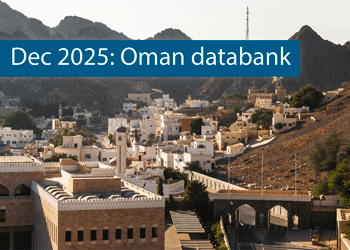 Oman’s growth forecast points upwards
Oman’s growth forecast points upwards24 December 2025
-
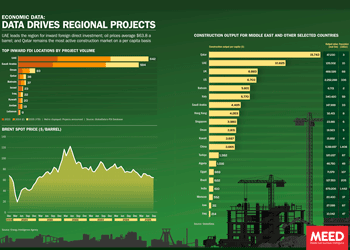 December 2025: Data drives regional projects
December 2025: Data drives regional projects23 December 2025
-
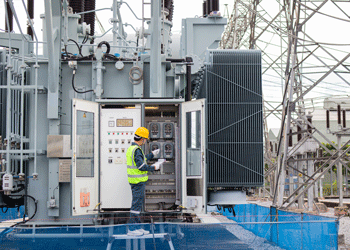 Local firm bids lowest for Kuwait substation deal
Local firm bids lowest for Kuwait substation deal22 December 2025
-
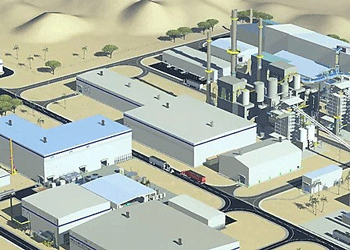 Saudi-Dutch JV awards ‘supercentre’ metals reclamation project
Saudi-Dutch JV awards ‘supercentre’ metals reclamation project22 December 2025
-
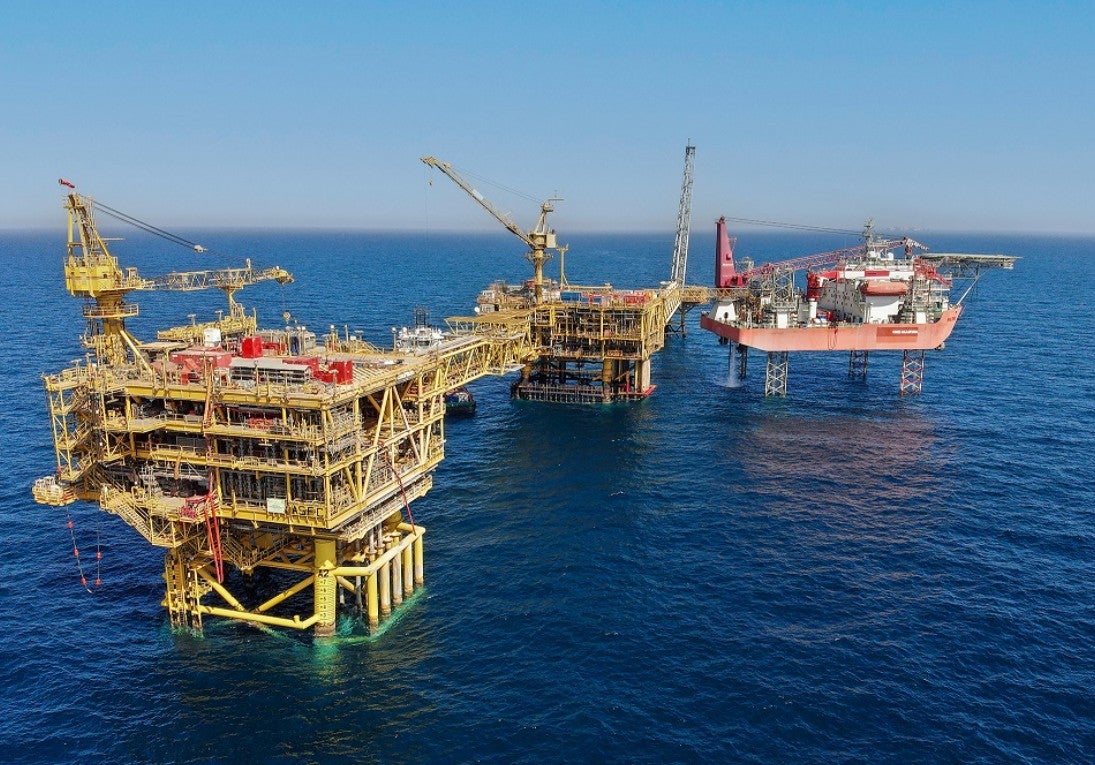 QatarEnergy LNG awards $4bn gas project package
QatarEnergy LNG awards $4bn gas project package22 December 2025
All of this is only 1% of what MEED.com has to offer
Subscribe now and unlock all the 153,671 articles on MEED.com
- All the latest news, data, and market intelligence across MENA at your fingerprints
- First-hand updates and inside information on projects, clients and competitors that matter to you
- 20 years' archive of information, data, and news for you to access at your convenience
- Strategize to succeed and minimise risks with timely analysis of current and future market trends

Related Articles
-
 Oman’s growth forecast points upwards
Oman’s growth forecast points upwards24 December 2025

MEED’s January 2026 report on Oman includes:
> COMMENT: Oman steadies growth with strategic restraint
> GVT & ECONOMY: Oman pursues diversification amid regional concerns
> BANKING: Oman banks feel impact of stronger economy
> OIL & GAS: LNG goals galvanise Oman’s oil and gas sector
> POWER & WATER: Oman prepares for a wave of IPP awards
> CONSTRUCTION: Momentum builds in construction sectorTo see previous issues of MEED Business Review, please click herehttps://image.digitalinsightresearch.in/uploads/NewsArticle/15306449/main.gif -
 December 2025: Data drives regional projects
December 2025: Data drives regional projects23 December 2025
Click here to download the PDF
Includes: Top inward FDI locations by project volume | Brent spot price | Construction output
MEED’s January 2026 report on Oman includes:
> COMMENT: Oman steadies growth with strategic restraint
> ECONOMY: Oman pursues diversification amid regional concerns
> BANKING: Oman banks feel impact of stronger economy
> OIL & GAS: LNG goals galvanise Oman’s oil and gas sector
> POWER & WATER: Oman prepares for a wave of IPP awards
> CONSTRUCTION: Momentum builds in construction sectorTo see previous issues of MEED Business Review, please click herehttps://image.digitalinsightresearch.in/uploads/NewsArticle/15306140/main.gif -
 Local firm bids lowest for Kuwait substation deal
Local firm bids lowest for Kuwait substation deal22 December 2025
The local Al-Ahleia Switchgear Company has submitted the lowest price of KD33.9m ($110.3m) for a contract to build a 400/132/11 kV substation at the South Surra township for Kuwait’s Public Authority for Housing Welfare (PAHW).
The bid was marginally lower than the two other offers of KD35.1m and KD35.5m submitted respectively by Saudi Arabia’s National Contracting Company (NCC) and India’s Larsen & Toubro.
PAHW is expected to take about three months to evaluate the prices before selecting the successful contractor.
The project is one of several transmission and distribution projects either out to bid or recently awarded by Kuwait’s main affordable housing client.
This year alone, it has awarded two contracts worth more than $100m for cable works at its 1Z, 2Z, 3Z and 4Z 400kV substations at Al-Istiqlal City, and two deals totalling just under $280m for the construction of seven 132/11kV substations in the same township.
Most recently, it has tendered two contracts to build seven 132/11kV main substations at its affordable housing project, west of Kuwait City. The bid deadline for the two deals covering the MS-01 through to MS-08 substations is 8 January.
https://image.digitalinsightresearch.in/uploads/NewsArticle/15305745/main.gif -
 Saudi-Dutch JV awards ‘supercentre’ metals reclamation project
Saudi-Dutch JV awards ‘supercentre’ metals reclamation project22 December 2025
The local Advanced Circular Materials Company (ACMC), a joint venture of the Netherlands-based Shell & AMG Recycling BV (SARBV) and local firm United Company for Industry (UCI), has awarded the engineering, procurement and construction (EPC) contract for the first phase of its $500m-plus metals reclamation complex in Jubail.
The contract, estimated to be worth in excess of $200m, was won by China TianChen Engineering Corporation (TCC), a subsidiary of China National Chemical Engineering Company (CNCEC), following the issue of the tender in July 2024.
Under the terms of the deal, TCC will process gasification ash generated at Saudi Aramco’s Jizan refining complex on the Red Sea coast to produce battery-grade vanadium oxide and vanadium electrolyte for vanadium redox flow batteries. AMG will provide the licensed technology required for the production process.
The works are the first of four planned phases at the catalyst and gasification ash recycling ‘Supercentre’, which is located at the PlasChem Park in Jubail Industrial City 2 alongside the Sadara integrated refining and petrochemical complex.
Phase 2 will expand the facility to process spent catalysts from heavy oil upgrading facilities to produce ferrovanadium for the steel industry and/or additional battery-grade vanadium oxide.
Phase 3 involves installing a manufacturing facility for residue-upgrading catalysts.
In the fourth phase, a vanadium electrolyte production plant will be developed.
The developers expect a total reduction of 3.6 million metric tonnes of carbon dioxide emissions a year when the four phases of the project are commissioned.
SARBV first announced its intention to build a metal reclamation and catalyst manufacturing facility in Saudi Arabia in November 2019. The kingdom’s Ministry of Investment, then known as the Saudi Arabian General Investment Authority (Sagia), supported the project.
In July 2022, SARBV and UCI signed the agreement to formalise their joint venture and build the proposed facility.
The project has received support from Saudi Aramco’s Namaat industrial investment programme. Aramco, at the time, also signed an agreement with the joint venture to offtake vanadium-bearing gasification ash from its Jizan refining complex.
Photo credit: SARBV
https://image.digitalinsightresearch.in/uploads/NewsArticle/15305326/main.gif -
 QatarEnergy LNG awards $4bn gas project package
QatarEnergy LNG awards $4bn gas project package22 December 2025
QatarEnergy LNG, a subsidiary of state-owned QatarEnergy, has awarded the main engineering, procurement, construction and installation (EPCI) contract for a major package for the second phase of its North Field Production Sustainability (NFPS) project.A consortium comprising the Italian contractor Saipem and state-owned China Offshore Oil Engineering Company (COOEC) has secured the EPCI contract for the COMP5 package. The contract value is $4bn, with Saipem declaring its share to be worth $3.1bn.
Milan-headquartered Saipem said the contract will run for about five years. The scope of work comprises engineering, procurement, fabrication and installation of two compression complexes, each including a compression platform, a living quarters platform, a flare platform supporting the gas combustion system, and the related interconnecting bridges. Each complex will have a total weight of about 68,000 tonnes.
Offshore installation operations will be carried out by Saipem’s De He construction vessel in 2029 and 2030.
MEED previously reported that the following contractors submitted bids for the NFPS phase two COMP5 package:
- Larsen & Toubro Energy Hydrocarbon (India)
- McDermott (US)
- Saipem/China Offshore Oil Engineering Company (Italy/China)
QatarEnergy LNG, formerly Qatargas, is said to have issued the tender for the NFPS phase two COMP5 package in the first quarter of the year.
Contractors submitted technical bids for the COMP5 package in late June, while commercial bids were submitted by 8 October, as per sources.
Based upon initial evaluation of bids by QatarEnergy LNG, L&TEH has emerged as the lowest bidder for the COMP5 package, followed by McDermott, with the consortium of Saipem and COOEC in third place, MEED reported in late October.
In the weeks following that, the project operator is said to have engaged all bidders for a final round of negotiations, during which the consortium of Saipem and COOEC is believed to have “clinched the deal”, according to sources.
The detailed scope of work on the COMP5 package covers the EPCI work on the following:
- Two gas compression platforms, each weighing 30,000-35,000 tonnes, plus jacket
- Two living quarters platforms, plus jacket
- Two gas flare platforms, plus jacket
- Brownfield modification work at two complexes
NFPS scheme
QatarEnergy’s North Field liquefied natural gas (LNG) expansion programme requires the state enterprise to pump large volumes of gas from the North Field offshore reserve to feed the three phases of the estimated $40bn-plus programme.
QatarEnergy has already invested billions of dollars in engineering, procurement and construction works on the two phases of the NFPS project, which aims to maintain steady gas feedstock for the North Field LNG expansion phases.
The second NFPS phase will mainly involve building gas compression facilities to sustain and gradually increase gas production from Qatar’s offshore North Field gas reserve over the long term.
Saipem has been the most successful contractor on the second NFPS phase, securing work worth a total of $8.5bn.
QatarEnergy LNG awarded Saipem a $4.5bn order in October 2022 to build and install gas compression facilities. The main scope of work on the package, which is known as EPCI 2, covers two large gas compression complexes that will comprise decks, jackets, topsides, interconnecting bridges, flare platforms, living quarters and interface modules.
The gas compression complexes – CP65 and CP75 – will weigh 62,000 tonnes and 63,000 tonnes, respectively, and will be the largest fixed steel jacket compression platforms ever built.
Following that, Saipem won combined packages COMP3A and COMP3B of the NFPS project’s second phase in September last year.
The scope of work on the combined packages encompasses the EPCI of a total of six platforms, approximately 100 kilometres (km) of corrosion resistance alloy rigid subsea pipelines of 28-inches and 24-inches diameter, 100km of subsea composite cables, 150km of fibre optic cables and several other subsea units.
Separately, QatarEnergy LNG awarded McDermott the contract for the NFPS second phase package known as EPCI 1, or COMP1, in July 2023. The scope of work on the estimated $1bn-plus contract is to install a subsea gas pipeline network at the North Field gas development.
In March this year, India’s Larsen & Toubro Energy Hydrocarbon (LTEH) won the main contract for the combined 4A and 4B package, which is the fourth package of the second phase of the NFPS project and is estimated to be valued at $4bn-$5bn.
The main scope of work on the package is the EPCI of two large gas compression systems that will be known as CP8S and CP4N, each weighing 25,000-35,000 tonnes. The contract scope also includes compression platforms, flare gas platforms and other associated structures.
LTHE sub-contracted detailed engineering and design works on the combined 4A and 4B package to French contractor Technip Energies.
NFPS first phase
Saipem is also executing the EPCI works on the entire first phase of the NFPS project, which consists of two main packages.
Through the first phase of the NFPS scheme, QatarEnergy LNG aims to increase the early gas field production capacity of the North Field offshore development to 110 million tonnes a year.
QatarEnergy LNG awarded Saipem the contract for the EPCI package in February 2021. The package is the larger of the two NFPS phase one packages and has a value of $1.7bn.
Saipem’s scope of work on the EPCI package encompasses building several offshore facilities for extracting and transporting natural gas, including platforms, supporting and connecting structures, subsea cables and anti-corrosion internally clad pipelines.
The scope of work also includes decommissioning a pipeline and other significant modifications to existing offshore facilities.
In addition, in April 2021, QatarEnergy LNG awarded Saipem two options for additional work within the EPCI package, worth about $350m.
QatarEnergy LNG awarded Saipem the second package of the NFPS phase one project, estimated to be worth $1bn, in March 2021.
Saipem’s scope of work on the package, which is known as EPCL, mainly covers installing three offshore export trunklines running almost 300km from their respective offshore platforms to the QatarEnergy LNG north and south plants located in Ras Laffan Industrial City.
Saipem performed the front-end engineering and design work on the main production package of the first phase of the NFPS as part of a $20m contract that it was awarded in January 2019. This provided a competitive advantage to the Italian contractor in its bid to win the package.
https://image.digitalinsightresearch.in/uploads/NewsArticle/15305330/main2239.jpg

